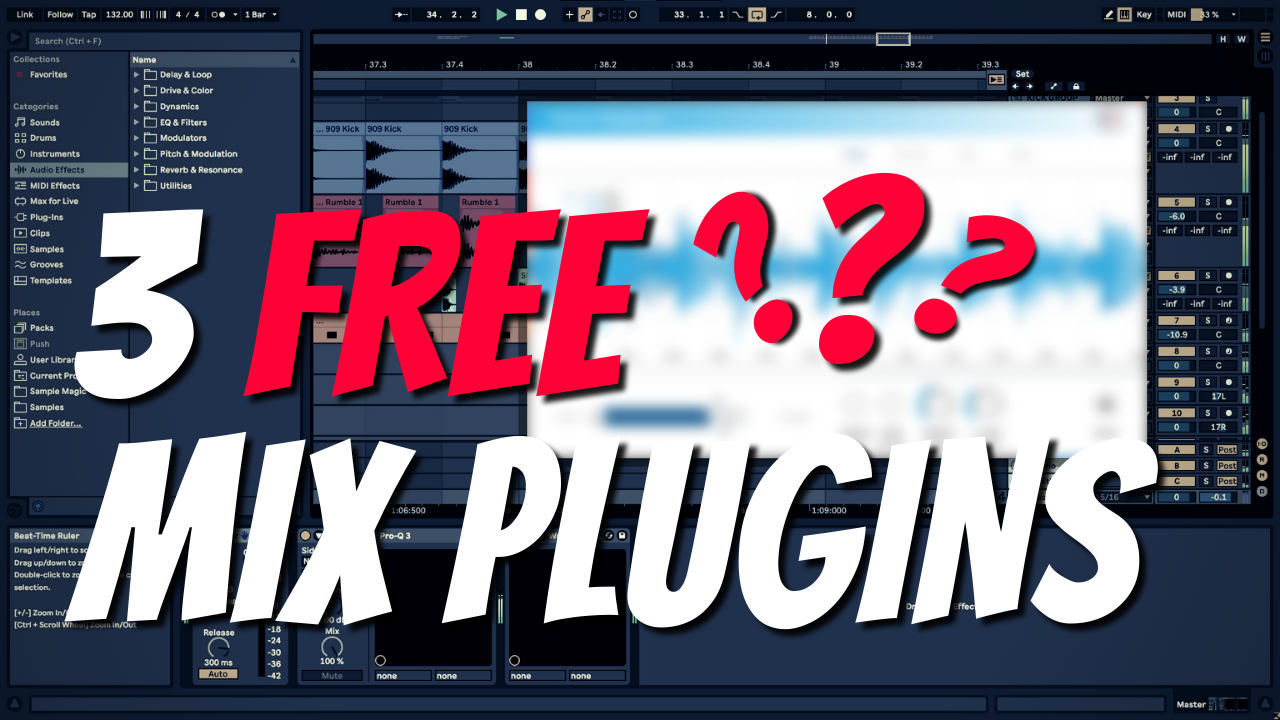I often catch myself using the phrase ‘Let’s have a look at how this sounds’. That’s a bit strange ain’t it? Well, in this article, I’ll actually show you 3 free mix plugins that will help you mix with your eyes.
Voxengo Span Spectrum Analyzer
Even though everyone says to ‘just use your ears’, that advice doesn’t apply in lots of situations. If you’re mixing in a reverberant space, with speakers sitting in the corner of your room, and no single piece of acoustic treatment to be found, you’re making it very hard for yourself. Some notes may sound boomy, while others disappear entirely.
But even when you’re mixing music on headphones, not all of those headphones have a flat frequency response. Some just stop at 50Hz or at the other end of the spectrum at 15kHz. And not only that but when you’re getting older, you will have trouble hearing the highest of frequencies.
Luckily, there’s a very simple tool to get around these issues. And that’s a spectrum analyzer. A spectrum analyzer like the free Voxengo Span plugin, is a tool that will help you visualize frequency over amplitude.

I often had some sort of weird hum, buzz, or even very high-frequency whines from faulty equipment or interference, which was easily identifiable with a spectrum analyzer. But also low rumbles from the drummer hitting the microphone stand, or the neighbors firing up their DIY club system.
Spectrum analyzers also make it real easy to compare your music to a reference track. You’ll immediately see whether you have too much low end, too little high end, or anything in between. And in most cases, a flat frequency spectrum is a reasonable goal to aim for.
But of course, never get obsessed with comparing the frequency spectrum of others to your own music. It’s a great future to get in the ballpark, but don’t stress it when it’s not matching a hundred percent.
Another benefit of Voxengo Span is that it has a built-in correlation meter. And this is useful to check whether your stereo image is out of phase. Trust me, I receive a lot of mixes where one of the microphones had a flipped polarity, so this is an easy way to identify this. It can also happen when using short delay times or stereo wideners as I show in the video above.
Waveobserber Oscilloscope Plugin
Another powerful mix plugin is an oscilloscope plugin. Waveobserber by Press Play is simple to use and effective. Oscilloscope plugins let you look at the waveform, in the same way when you zoom in real close to your audio clips, but in real-time. Put it on your master track and have a run through your synthesizer’s waveforms to see where those names like triangle, square, and saw, actually come from.

An oscilloscope makes it easy to see D.C. offsets and peaky transients. It’s a helpful tool to see the effect of compression in real-time. I also use oscilloscopes for checking the length of my kickdrums. You want to avoid having overlapping kickdrums at all times since this will muddy up your mix in an instant.
Youlean Loudness Meter
Finally, everyone has probably heard of LUFS or loudness normalization. Spotify normalizes to -14LUFS, meaning that louder tracks will get turned down to prevent us, lazy listeners, from having to reach for the volume control. YouTube also normalizes to -14LUFS, but Apple Music now normalizes to -16LUFS.
But not all DAWs have loudness metering options like Cubase and Logic. So in that case the Youlean Loudness Meter is a great plugin to analyze your track’s loudness. It also monitors true peak levels which takes ‘inter-sample peaks’ into consideration.

Spotify recommends putting the ceiling of your limiter at -1.0dBFS to prevent clipping when converting to MP3 or AAC. Without a true peak limiter, your converter can actually still clip when converting digital to analog signals, and most meters in your DAW don’t future true peak limiters, so this is a very welcome future.
The Youlean Loudness Meter also shows short-term loudness, the average loudness over the last 3 seconds. Integrated loudness, the value streaming platforms look at, is the average over the entire duration of the track.
This means that you can actually go louder than -14LUFS in certain sections of your song. As long as your average sits at -14LUFS, easily achievable with softer intro, verses, and breakdowns. By keeping your music dynamic, you’ll actually sound louder than overly compressed, flat, and distorted mixes. In the end, it all gets turned down anyway.
So now you know how to check the loudness of your track.
Conclusion
Go download these 3 free mix plugins right now, as they will help to dramatically improve your mix and production quality. I tell all of my music production students to download these 3 plugins as they’ll make the learning process so much easier. Ears can’t be trusted. When you’re tired you’ll perceive things differently, so remember to ‘take a look’ at your mixes from time to time and you’ll be on your way to making better music!











